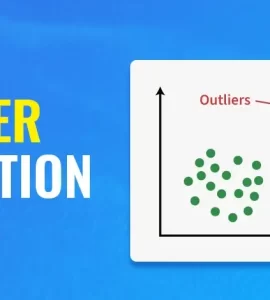 Posted On
Posted On
A Beginners Guide To Email Validation
 Posted On
Posted On
What is Email Validation?
Email validation is a procedure that verifies if an email address is deliverable and authentic. To put it in a simple language, email validation is a way to make sure that an email actually exists. It also checks whether every email address on your email bulk list is legitimate or not. It also verifies the reliability of the service provider. Currently, Gmail and Yahoo are reliable service providers.
Why is Email Validation important?
Marketing via Emails is crucial in the eCommerce sector. Without relying on the algorithms of social media, it streamlines the marketing process. It is useful for running an email campaign. You might now presume that only legitimate users will receive the email and invalid email addresses will result in hard bounces. However, that is not the case. Hard bounces will jeopardise your reputation in addition to reducing your deliverability.
Email verification makes sure that everything goes well. It detects typos, whether they are innocent mistakes or deliberate omissions. Email validation is crucial to preserving the sender’s good name and will optimise the effectiveness of the email program run by the sender.
How does Email Validation work?
In the first step, the marketers are required to upload the list of the email ids. In the consequent step, the email ids are verified by checking whether there are any spelling mistakes and checked if the domain is reliable. There are several methods available to carry out email validation.
-
Email verification API –
Application programming interface is referred to as API. It is a pre-programmed application that marketers use to verify the validity of email addresses. By incorporating an email validation API, the website or application may verify that your given email addresses have the proper syntax and domains.
The emails are verified using a series of procedures by the Email APIs. These begin with a syntax check to look for the email domain and prefix, followed by an address name detection to flag any dubious email names.
-
One time validation tools –
This alternative is preferred by users with a small mailing list. There are numerous online tools for email validation. Your mailing list must be uploaded, and the programmes will categorise the email addresses as valid, dangerous, and invalid.
Valid means that the email address exists and can be accessed. Invalid indicates that there is a syntax or DNS error. Last but not least, risky denotes the existence of an email address but implies that using it may not be fully secure.
What are the benefits of email validation?
- Enhances email deliverability
- Reduces spams
- Cost-effective and saves time
- Better engagement
Conclusion
Email validation is the process of verifying email addresses. It entails proofreading your email contacts’ spellings, formats, and syntax. If you work in the e-commerce industry, email validation can be quite helpful for you. It provides the finest returns on investment.
It lowers your bounce rate and aids in increasing email deliverability. You may eliminate dangerous and invalid emails from your list with an email verification service. As a result, you can run campaigns that yield greater outcomes.






